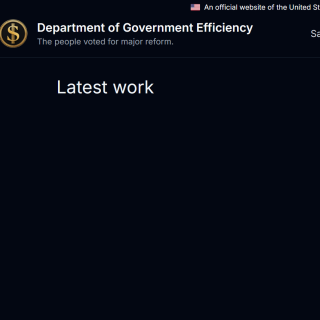In 2013, a group of Columbus citizens became RadioactiveWasteAlert.org when we learned that the Ohio EPA had permitted a local business to “recycle” frack drill cuttings (the dirt, rocks, sludge from a frack bore hole) along the Alum Creek, next to our homes.
We got busy, got the word out, sold t-shirts, put up billboards, and brought in good science professionals: Soil and Watershed consultant -Julie Weatherington-Rice; Microbiologist -Yuri Gorby; Pediatrician -Larysa Dyrszka; and Radiochemist -Michael Schultz, to help us understand the threat. Turns out the Marcellus and Utica shale is naturally radioactive.
Ohio legislators redefined Frack drill cuttings from NORM (naturally occurring radioactive materials) to TENORM (technically enhanced naturally occurring radioactive materials) in the 2013 budget bill. Now they can be dumped into municipal landfills, with no required testing or tracking. Radium can’t be “recycled” out of frack waste, it’s highly water soluble, has a half life of 1,620 years, and is directly linked with leukemia, breast and bone cancer. Frack water waste, which contains carcinogens, endocrine disruptors, and neurotoxins from frack chemicals, and radium from the shale, is so toxic it’s pumped into injection wells (abandoned vertical oil wells, or high volume/high pressure wells), which are causing frackquakes in OH, PA, TX, and big time in Oklahoma.
Ohio legislators gave the Ohio Department of Natural Resources (ODNR) complete authority over oil & gas activities in 2004. So our all volunteer group created, with help from the Community Environmental Legal Defense Fund’s (celdf.org), the Columbus Community Bill of Rights, a Charter Amendment, to protect our inalienable rights for pure water, clean air, safe soil and local self governance.
In October, 2014, my friend and fellow eco activist, Leatra Harper fwap.org, encouraged me to meet Steve Horn, journalist with DeSmogBlog. He was coming to Columbus to attend the Interstate Oil & Gas Compact Commission (IOGCC) convention http://iogcc.publishpath.com. Maybe we could meet and help each other out. So I looked him, and the IOGCC up, bit the bullet, and paid the hefty registration fee.
The event was swanky and attendees were vetted as they checked in. I wasn’t sure they’d let me in. During the first break, Steve and I found each other and had coffee. Then we split off, and I headed to the panel, “The Ohio Shale Play.”
Jim Zehringer, Director ODNR, moderated. ”We are still in the infancy of this shale play, and I can remember, just probably about five years ago, when the candidate Kasich was running for Governor, and he uh, we were in his office, in his election office, and he asked me if I ever heard of the Utica Shale, and I had no idea what he was talking about. And so that’s how, here in Ohio, and I’m sure that geologists and Rick, and you in the industry, were very much familiar with it, but for probably 99% of Ohioans, we weren’t, and I live in the Western part of the state that borders Indiana, and I will guarantee you that 90% of them still don’t know about the Utica Shale.” He continued, “ODNR has the sole and exclusive authority over Oil and Gas in the State of Ohio. And we could not do that without our sister agencies and our partners. A little bit like Governor Bryant talked about working with Alabama closely to make sure that permitting is done rapidly and quickly. We do that too, we’re really experts in certain fields, but what this panel brings to us is experts in their particular agency, and we have to work together.”
Rick Simmers, Chief of Oil & Gas, ODNR, was up next. He was markedly reverent. “….The Utica Shale production in 2013 had about 3.7 million barrels of oil. Now I want to put that in perspective. That’s about one days of production out of Texas. It’s about three days of production in North Dakota. But what we want you to understand is, all the production is relative, and all the production is very important. What this production allows is that our country is gaining energy independence and every bit of energy production from all of our states matter.” He fawned over his counterparts, Tim Baker, Director of Oil & Gas Division, Oklahoma Corporation Commission, and Lynn D. Helms, Director, North Dakota Department of Mineral Resources, and asked them to talk about their more developed Shale Play.
David Mustine, Senior Managing Director of Chemical and Polymer, for JobsOhio was next. He began, “So what JobsOhio did, and by the way, we’re the private, economic development organization for the State of Ohio, created by Governor Kasich. Wanting to do something very different than what’s been done over the last 30 years or so in our state in economic development. So we have our own Board of Directors, and business people, in fact Gary Heminger, the CEO of Marathon Petroleum was on our Board.” JobsOhio is controversial. Not even the Ohio State Auditor can get a hold of their books (http://www.dispatch.com/content/stories/local/2015/01/02/jobsohio-audit.html). Mustine continued, “We focused on the midstream, and this was really a new industry for us, and it’s been growing at an amazing pace. You think about it, really in about 24 months Rick, when you say 24 to 30 months, we’ve gone from no investment to over $8 to $9 Billion. In fact I think it’s probably closer to $12 Billion, when you add in some of the major pipeline announcements that we’ve had just recently…” JobsOhio is funded by Ohio Liquor taxes - this takes a bit of the pleasure out of your Mojito!
Craig Butler, newly appointed Director of Ohio EPA, former ODNR liaison for Governor Kasich, followed. “So we have a long history of working really collaboratively with our business and development, our business organizations, within the state of Ohio…..it’s one of the strong focus that I’ve got coming back as Director….we’ve got an office within my, within our, senior staff, that is really a business development office.” Craig Butler continued, “We talk a lot about streamlining permitting…. So, we have gone through this process on streamlining permitting around oil and gas. It was precisely because we knew if we didn’t find an easier way, a better way, a more efficient way to permit these operations in Ohio, we would never be able to keep up…. The mechanism that we found that works really well, and we’ve had a long history of using General Permits in the state of Ohio, was to develop a general permit for the oil and gas development of oil and gas…..it provides us, us not only the flexibility, but you all the flexibility, to move your operation very rapidly. So you are not needing to wait around 90 days, 120 days for an individual permit.”
He then entered into familiar territory, “So….we also look at managing solid waste. It’s kind of a new and emerging issue. It’s one of those touch points that you hear a lot of talk about. But we passed in HB 59, we really strengthened the regulatory framework, statewide. And it was a great collaboration between the Department of Natural Resources, Ohio EPA and our Department of Health. Which really shares the regulatory structures around how we deal with Drill Cuttings, how we deal with Naturally Occurring Radioactive Materials, and Technically Enhanced Radioactive Material…..we have developed, I think, very progressive and yet flexible regulatory structure around how we categorize this material. How we then find opportunities for re-use and recycling of the material. And then the material that needs managed through regulatory process in a landfill, we set up a structure that gives maximum flexibility for that.” Spin, spin, spin.
Then Chief Larry Flowers, Ohio State Fire Marshall, took the podium. “And some of you may ask, why is the State Fire Marshall’s office in the Department of Commerce. It’s because of our wide regulatory authority, that we are a good fit.…” He continued, “Through John Kasich's executive order, the Ohio Department of Commerce has sole jurisdiction for building code compliance, easing the process for the oil and gas companies.” Chief Flowers is also in charge of training First Responders, “In fact Eric Meis, the Emergency Preparedness and Public Awareness Manager for Midstream Energy, is a member of our State Fire Council, which is an advisory council to my office.” Cozy.
Rick Simmers invited Matthew Lepore, Director of the Oil & gas Conservation Commission, Colorado DNR, to speak, then he wrapped up the panel with the convention’s hot topic. “One of the problems that we’ve begun to work on with our state partners from around the country is induced seismicity. As you all read in the newspaper, seismicity has become a very big topic. It captures headlines almost every day……So I want to end with States First. Matt, Lynn, Tim and others in the room, Hershel, are all working on this. We’re going to have a discussion on induced seismicity this afternoon where we can talk more about the States First Initiative.” He thanked us all.
This was October, 2014, nineteen months ago.
It’s clear that Governor John Kasich and his “Team” has created a legal structure and business model, funded by Ohio citizens’ liquor tax monies, to build a massive fracking industry, with infrastructure, upstream, midstream and downstream, with no transparency. The General Assembly, ODNR, OHEPA, OHDH, JobsOhio and the Dept. of Commerce are in his Pocket. I guess when you’re angling to be the President, home state “jobs” sure look good, no matter how you get them, or how it impacts local citizens and communities.
All the presenters on the panel referred to a power point, which I did not receive. However, I taped each presentation from the “Ohio Shale Play” panel. You can read them at: cinubluegreen.blogspot.com.
By the way, Steve Horn has been reporting extensively on the Interstate Oil & Gas Compact Commission with DeSmogblog. http://www.desmogblog.com/iogcc-interstate-oil-gas-lobbying-compact. Recently, Steve encouraged me to write about my experience at the IOGCC. Thanks Steve.
For those of you who have done the Representative, Regulatory Agency advocacy route, and have experienced the political game as ineffectual, inept, even corrupt - Join Us. We kicked off the 2nd citizen-led ballot initiative for the Columbus Community Bill of Rights in March, and in June will kick off the Franklin County Community Bill of Rights. We, the People, stand for our inalienable rights for: pure water, clean air, safe soil and local self governance.



